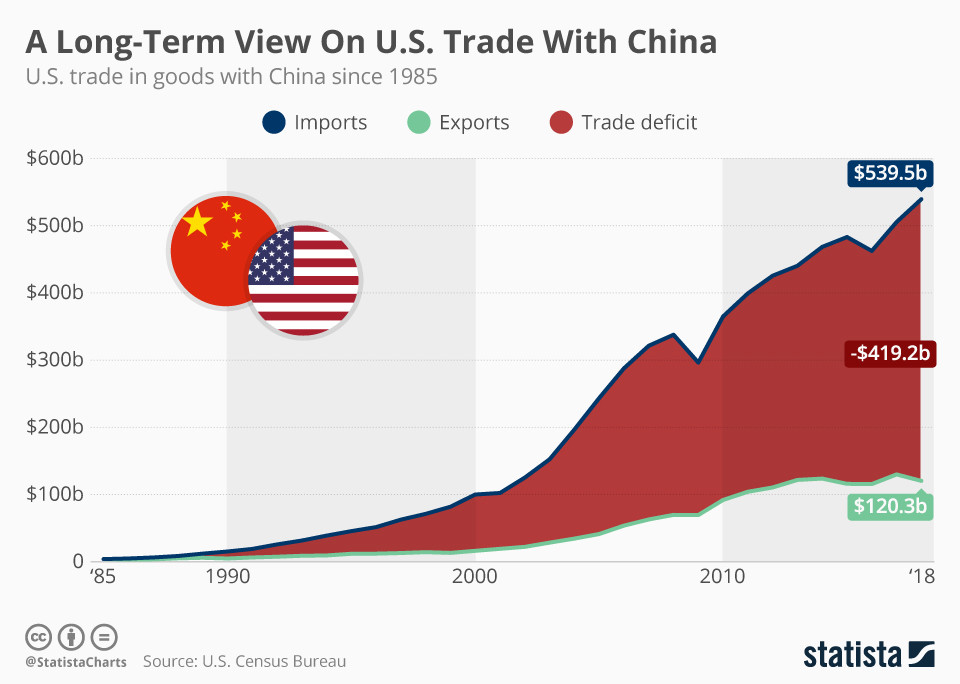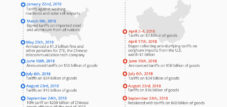Just hours after President Trump warned China on Twitter not to fight the latest US tariff increase, the Chinese Finance Ministry did just that by raising tariffs on thousands of American products worth about $60 billion in annual imports. The Chinese tariff hike, which takes effect on June 1, is a direct response to the Trump administration's decision on Friday to increase tariffs on $200 billion worth of imports from China from 10 percent to 25 percent, just hours after trade talks between the two countries collapsed.
“China’s tariff move is a response to US unilateralism and trade protectionism,” the Chinese said in a statement on Monday. “China hopes that the US will return to the right path of bilateral trade talks, cooperate with China, and meet halfway to reach a mutually beneficial agreement based on mutual respect.”
The US is expected to respond to the Chinese announcement by imposing an additional 25 percent tariff on all remaining imports from China later on Monday, further escalating the trade war that has dragged on for more than a year. Trump has repeatedly expressed his dissatisfaction with the trade imbalance between the world's two largest economies, declaring that the US is being robbed and losing hundreds of billions of dollars annually in Chinese trade. And while the US trade deficit with China did indeed reach a record high of $419 billion in 2018, neither the lost money nor the large trade deficit is necessarily a bad thing for the United States. In fact, the recent increase in the deficit is a sign of strength, as a strong US economy and a strong dollar boost demand for Chinese goods in the US.
Just hours after President Trump warned China not to retaliate against the US's latest tariff hike on Twitter, the Chinese Ministry of Finance did just that by raising the tariffs on thousands of American products worth roughly $60 billion in annual imports. Going into effect on June 1, the Chinese tariff hike is a direct response to the Trump administration's decision to raise the tariff rate on $200 billion worth of imports from China from 10 to 25 percent on Friday, just hours after trade talks between the two countries had broken down.
“China's tariff move is in response to the US unilateralism and trade protectionism,” the Chinese said in a statement issued on Monday. “China hopes that the US will return to the right track of bilateral trade talks, work together with China and meet each other halfway, to reach a win-win and mutually beneficial agreement on the basis of mutual respect.”
The US is expected to respond to the Chinese announcement by levying an additional 25 percent on all remaining imports from China later on Monday, marking another escalation in the trade war that has been dragging on for more than a year now. Trump has repeatedly voiced his discontent with the trade imbalance between the world's two largest economies, stating that the US is being ripped off and losing hundreds of billions of dollars on Chinese trade every year. And while the US trade deficit with China did, in fact, reach a record high of $419 billion in 2018, that money is neither lost nor is the large trade deficit necessarily a bad thing for the United States. In fact, the latest increase in the deficit is a sign of strength, as a strong US economy and a strong dollar boost in demand for Chinese goods in the US.
You can find more infographics at Statista


